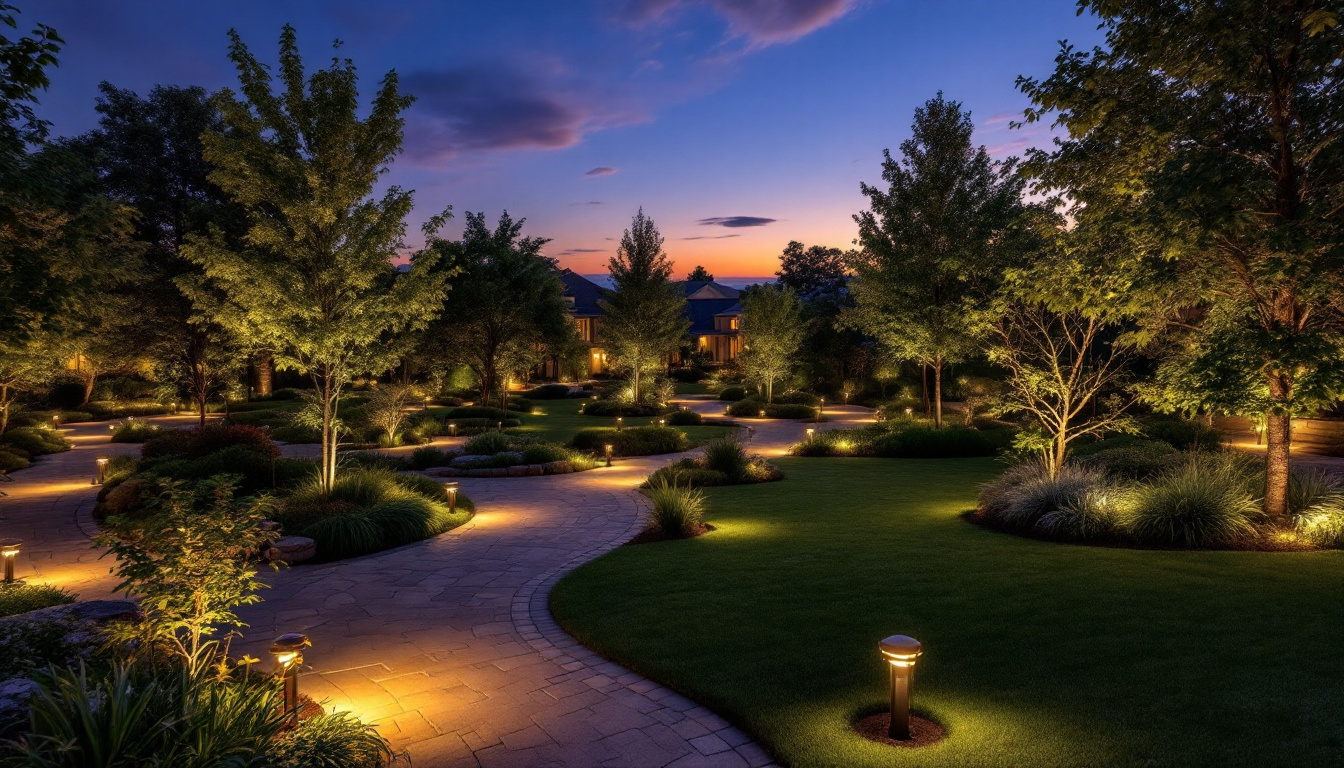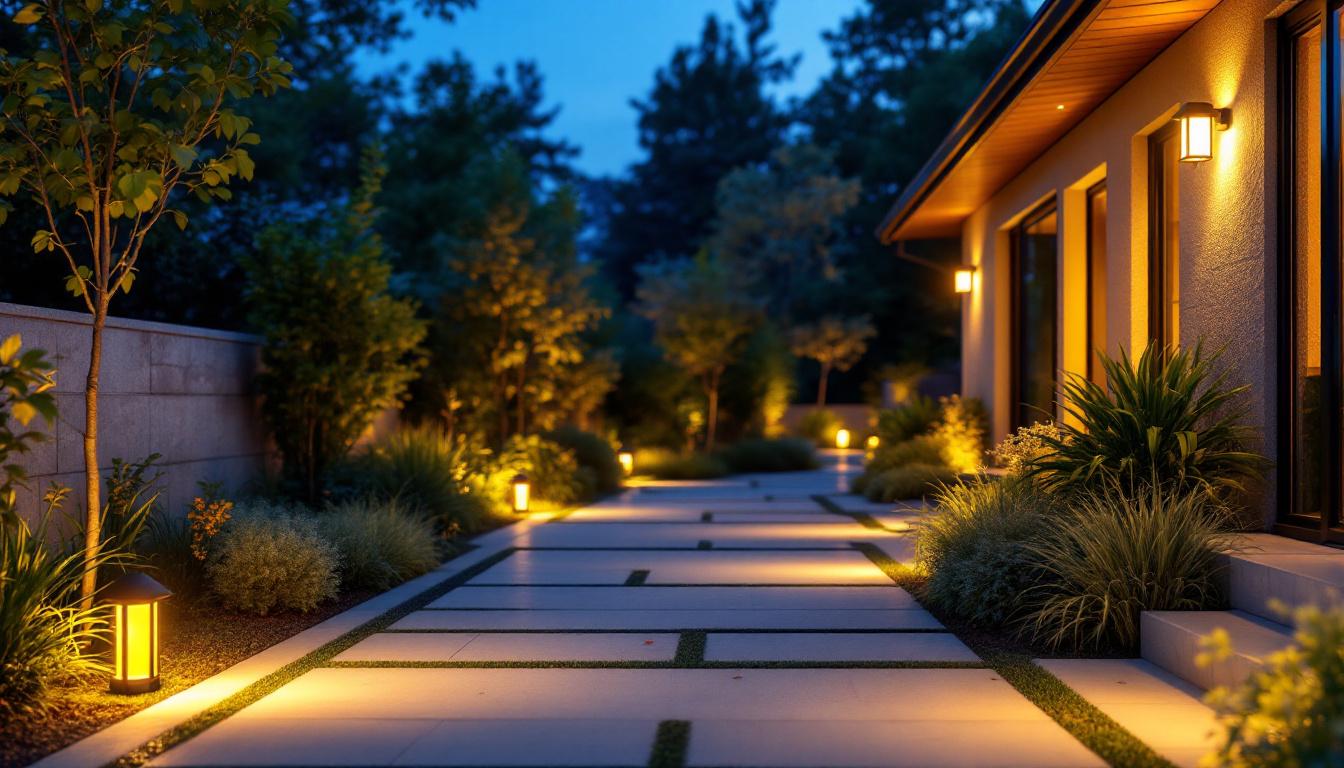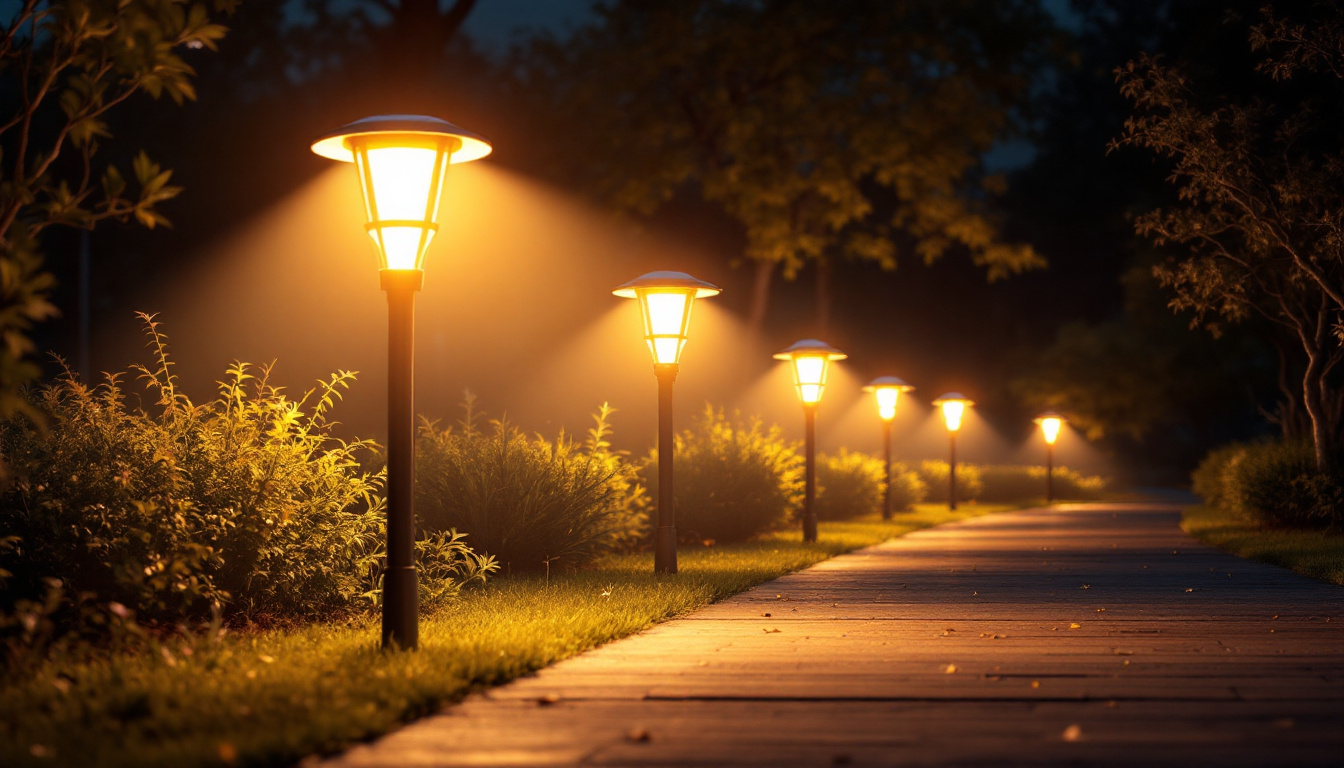
Landscape lighting is more than just a practical necessity; it is an art form that enhances the beauty and functionality of outdoor spaces. For lighting contractors, mastering the nuances of landscape lighting can provide a significant competitive edge. By understanding the various types of landscape lighting, contractors can offer tailored solutions that meet the unique needs of their clients.
There are several types of landscape lighting, each serving distinct purposes. Path lights illuminate walkways, ensuring safety and guiding guests through the property. Spotlights and floodlights highlight architectural features, trees, or garden beds, creating focal points that draw the eye. Additionally, well lights can be installed in the ground to provide subtle illumination without obstructing views.
Understanding these types allows contractors to create a balanced lighting design that enhances the overall aesthetic. Each type of lighting can be used in combination to achieve a layered effect, making the landscape visually appealing both during the day and at night. For instance, using a combination of uplighting on trees and downlighting on pathways can create a harmonious blend that not only highlights the natural beauty of the landscape but also ensures safety and functionality.
Implementing effective landscape lighting offers numerous benefits for homeowners. First and foremost, it enhances safety by illuminating pathways and driveways, reducing the risk of accidents. Moreover, well-placed lighting can increase security by deterring potential intruders, as well-lit areas are less inviting for unwanted guests.
Beyond safety and security, landscape lighting significantly boosts curb appeal. A beautifully lit garden or patio can transform an ordinary home into an extraordinary one, potentially increasing property value. This is an essential selling point for contractors looking to impress clients and secure repeat business. Furthermore, the right lighting can extend the usability of outdoor spaces into the evening hours, allowing families to enjoy their gardens, patios, or decks long after the sun has set. This added functionality can be particularly appealing for homeowners who love to entertain, as it creates an inviting atmosphere for gatherings and celebrations.
Additionally, landscape lighting can be designed to highlight seasonal changes, such as illuminating blooming flowers in spring or showcasing vibrant autumn foliage. By incorporating smart lighting solutions, contractors can offer clients the ability to adjust their lighting schemes according to the time of year or special occasions, adding a dynamic element to their outdoor spaces. This versatility not only enhances the aesthetic appeal but also allows homeowners to express their personal style through their landscape design.
For lighting contractors, selecting high-quality products is crucial. The market offers a wide range of options, from LED fixtures to solar-powered lights. Each product has its own advantages and disadvantages, and understanding these can help contractors make informed decisions that align with their clients’ needs.
LED lighting has gained popularity due to its energy efficiency and longevity. Unlike traditional incandescent bulbs, LEDs consume less power and have a much longer lifespan, making them a cost-effective choice in the long run. Additionally, they produce less heat, which can be advantageous in maintaining the integrity of surrounding plants and materials.
However, traditional lighting still has its place, particularly in applications where warm light is desired. Understanding the specific needs of each project will guide contractors in recommending the most suitable lighting solutions.
Solar-powered landscape lights have become increasingly popular due to their ease of installation and minimal operating costs. These lights harness solar energy during the day and illuminate at night without the need for wiring or electricity. While they are ideal for areas where running electrical lines is impractical, contractors should be aware of their limitations, such as brightness and duration of light.
When recommending solar options, contractors must assess the location’s sunlight exposure and consider the specific requirements of the project. This ensures that clients receive a reliable and effective lighting solution.
A well-thought-out lighting plan is essential for achieving the desired ambiance and functionality in a landscape. Contractors should consider several factors when designing a lighting layout, including the purpose of the space, the architectural features, and the surrounding environment.
Before beginning any installation, it is crucial to conduct a thorough assessment of the space. This includes evaluating the existing landscape, noting any focal points such as trees, water features, or architectural elements that should be highlighted. Understanding the client’s vision and how they intend to use the space will also inform the design process.
Taking measurements and creating a scale drawing can help visualize the layout and ensure that all areas are adequately illuminated. This step is vital for creating a cohesive lighting design that enhances the overall aesthetic of the property.
Layering light involves using different types of fixtures to create depth and dimension in the landscape. This technique can transform a flat and uninspiring space into a vibrant and inviting environment. By combining ambient, task, and accent lighting, contractors can achieve a balanced and dynamic lighting scheme.
For instance, path lights can provide ambient illumination, while spotlights can accentuate specific features. This layered approach not only enhances the visual appeal but also allows for flexibility in creating various moods and atmospheres.
Once the design plan is finalized, the installation process begins. Proper installation techniques are critical for ensuring that the landscape lighting functions effectively and lasts for years to come. Contractors should adhere to best practices to avoid common pitfalls and ensure customer satisfaction.
When installing wired lighting systems, careful attention must be paid to the placement of fixtures and the routing of wires. Wires should be buried at least 6 inches deep to protect them from damage and to prevent any tripping hazards. Additionally, fixtures should be strategically placed to avoid harsh shadows and ensure even illumination.
For solar-powered lights, placement is equally important. These lights should be positioned in areas that receive direct sunlight for optimal performance. Contractors should also consider the height and angle of fixtures to maximize their effectiveness.
After installation, it is essential to test the lighting system to ensure everything is functioning correctly. This includes checking for any dead spots, adjusting the angle of fixtures, and ensuring that the brightness levels meet the client’s expectations. Making these adjustments can significantly enhance the overall effectiveness of the lighting design.
Encouraging clients to view the lighting at different times of the day can also provide valuable feedback. This allows for further refinements and ensures that the final result aligns with the client’s vision.
Landscape lighting requires regular maintenance to ensure optimal performance and longevity. Educating clients about the importance of upkeep can enhance their satisfaction and prolong the lifespan of the lighting system.
Contractors should recommend regular inspections of the lighting system to identify any issues early on. This includes checking for burnt-out bulbs, damaged fixtures, and any debris that may obstruct light. Addressing these issues promptly can prevent more significant problems down the line.
Additionally, inspecting wiring and connections for signs of wear or corrosion is crucial for maintaining safety and functionality. Regular maintenance not only keeps the system looking its best but also ensures that it operates efficiently.
Educating clients on how to care for their landscape lighting can foster a sense of ownership and responsibility. Providing simple maintenance tips, such as cleaning fixtures and adjusting timers, can empower clients to take an active role in preserving their investment.
Offering seasonal maintenance services can also be an excellent way for contractors to build long-term relationships with clients. By providing ongoing support, contractors can ensure that their clients’ lighting systems remain in top condition year-round.
In a competitive market, effectively marketing landscape lighting services can set contractors apart from the competition. Developing a strong brand and showcasing expertise can attract new clients and generate referrals.
Creating a portfolio of completed projects is an effective way to demonstrate expertise and attract potential clients. High-quality photographs showcasing before-and-after transformations can highlight the impact of professional landscape lighting. Including client testimonials can further enhance credibility and trust.
Utilizing social media platforms to share project highlights and engage with the community can also increase visibility. Regularly posting content related to landscape lighting trends, tips, and ideas can position contractors as industry leaders.
Establishing relationships with other professionals in the landscaping and home improvement industries can lead to valuable referrals. Networking at local events, trade shows, and community gatherings can help contractors connect with potential clients and collaborators.
Partnering with landscapers, architects, and real estate agents can create a mutually beneficial relationship. By offering bundled services or referral incentives, contractors can expand their reach and attract new business.
Landscape lighting is an essential aspect of outdoor design that offers both aesthetic and functional benefits. For lighting contractors, mastering the intricacies of landscape lighting can provide a significant competitive edge. By understanding the types of lighting, selecting the right products, designing effective plans, and implementing best installation practices, contractors can deliver exceptional results that exceed client expectations.
Moreover, ongoing maintenance and effective marketing strategies can foster long-term relationships with clients and ensure sustained success in the industry. Embracing these principles will empower lighting contractors to thrive in a competitive market, ultimately enhancing their reputation and profitability.
Ready to give your clients the breathtaking outdoor spaces they dream of? At LumenWholesale, we provide lighting contractors like you with the highest quality, spec-grade landscape lighting products at prices that can’t be beaten. Say goodbye to local distributor markups and hello to a vast selection of reliable, high-performance lighting that meets the most rigorous industry standards. Plus, with free shipping on bulk orders, you can enjoy the ultimate convenience without any hidden fees. Elevate your landscape lighting services and secure that competitive edge with Wholesale Lighting at the Best Value from LumenWholesale.

Discover the essential guide to 2Ft LED lights tailored for lighting contractors.

Discover how automatic timers for outdoor lights are revolutionizing the lighting industry by enhancing energy efficiency, boosting security, and offering unparalleled convenience.

Discover how heavy-duty waterproof electrical connectors are revolutionizing the lighting industry, offering unparalleled durability and reliability for contractors.

Discover the essentials of bright solar-powered outdoor lights in just five minutes.